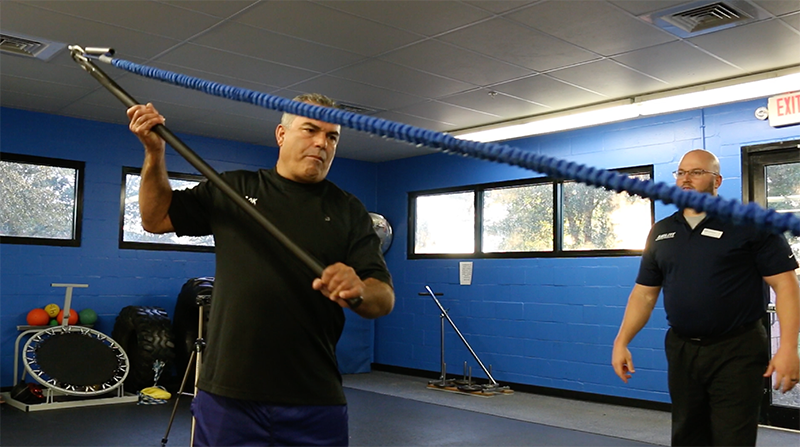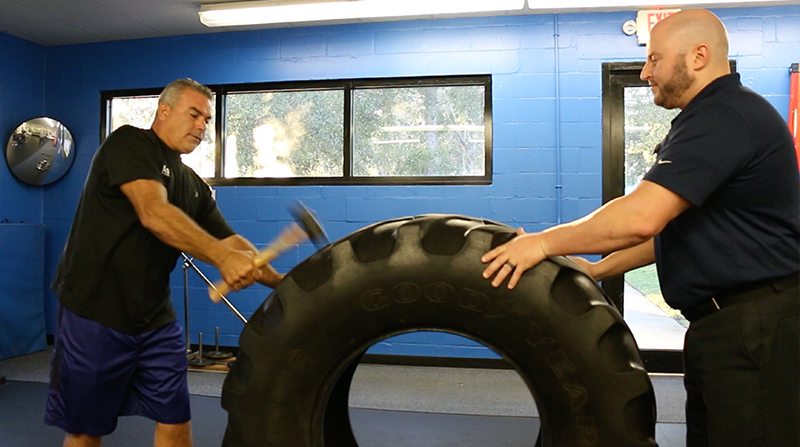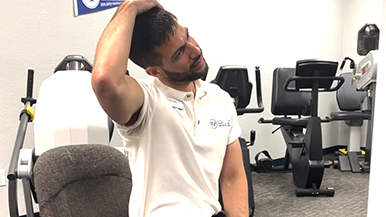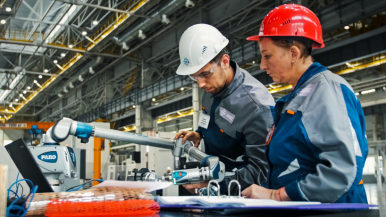Rehabilitation Program Gets Man Safely Back to Work After Two Different Operations
Carlos needed two different surgical procedures three years apart to repair a torn rotator cuff and an injured bicep muscle. But he also had a family to support and a paycheck to earn; he didn’t have the luxury of taking an extended leave of absence from work.
To get back to work as soon and safe as possible, Carlos entered the Ability Rehabilitation Early Return to Work (ERTW) Customized Workers’ Compensation and Disability Program. The expertise and experience of the Ability Rehabilitation team got him hammering, lugging sacks, and carrying ladders again.
“This place is a great place to be,” says Carlos. “Everybody is knowledgeable, understanding, and very respectful. They will work through every (challenge) with you, step by step, and get you going to the best of your ability.” The purpose of this work-related functional conditioning program is to prepare our patients better to return to work without the risk of re-injury.
This 4 to 6-week structured program utilizes standardized material and non-material objective testing to assess a patient’s current physical demand category (PDC) and compare that to the required PDC to return to work.
Initially, Carlos had been worried that his rehabilitation would take a lot longer than it did. He was incredibly pleased with the results. “I’ve been coming here for quite a while now,” Carlos says. “All of my movement is back. I was afraid that it was going to take a whole lot longer. However, everybody here is very knowledgeable, and they set you up in the right programs to get you right where you need to be, and even better.”
Once deficits are identified, an individual program is designed utilizing functional strength training and custom-designed work simulation equipment to simulate a patient’s individual job tasks as accurately as possible.
What Is the Early Return to Work (ERTW) Program?
 The Ability Rehabilitation ERTW program provides workers’ compensation and disability rehabilitation uniquely designed for the “industrial athlete” to help them get back to work as quickly and safely as possible.
The Ability Rehabilitation ERTW program provides workers’ compensation and disability rehabilitation uniquely designed for the “industrial athlete” to help them get back to work as quickly and safely as possible.
What Is a Rotator Cuff Tear?
The rotator cuff is comprised of the muscles and tendons that encapsulate the shoulder joint. These tendons and muscles provide stability to the shoulder and enable one to raise and rotate the arm.
Due to natural wear and tear of the shoulder over time, the tendons of the rotator cuff tear, causing considerable discomfort and reduction in arm functioning. Injuries can also come about due to degenerative rotator cuff tendons.
Other causes of rotator cuff tears include:
- Repetitive stress motions: manual jobs such as construction, warehouse lifting, and painting can put stress on the shoulder joint.
- Decreased blood supply: in older individuals, the rotator cuff tendon receives less blood, which can result in a tear.
- Traumatic events: injuries can also bring about rotator cuff tears such as automobile or biking accidents or falls.
How to Treat a Rotator Cuff Tear?
Both surgical and non-surgical methods exist for healing a torn rotator cuff.
Conservative options include:
- Rest
- Ceasing the activity causing the shoulder pain
- Over the counter medications such as aspirin and ibuprofen
- Physical therapy and strengthening exercises
- Steroid or cortisone injection
When non-surgical treatments do not succeed in resolving the problem, surgery may be recommended as a last resort. Modern surgical innovations allow surgeons to repair most rotator cuff tears arthroscopically using minimally-invasive techniques. Patients are typically in surgery for under an hour and can return home the same day as the procedure.
The surgeon inserts a small camera into the shoulder joint. Using an arthroscope and other precision devices, the torn tendon is reattached to the bone using small incisions.
Full Recovery After Surgery
 Surgery is considered the first phase on the path to full recovery. Physical therapy plays a critical role for the patient to recover their shoulder strength and range of motion and allow them to return to work and daily activities. A full recovery usually takes between three to six months after surgery.
Surgery is considered the first phase on the path to full recovery. Physical therapy plays a critical role for the patient to recover their shoulder strength and range of motion and allow them to return to work and daily activities. A full recovery usually takes between three to six months after surgery.
“Right now I’m in a reconditioning program, which sets you up to return to work, and that is working great,” says Carlos. “Everything they put me through here I do out there in the workforce. They will push you to your limit which is great because that’s when you know what your ability is.”
The Ability Rehabilitation ERTW program is designed to help worker’s compensation patients return to their physically demanding jobs with decreased risk of re-injury. Each program takes between 2-4 hours per day and is custom tailored to fit the demands of each profession such as:
- Law Enforcement
- Firefighters
- EMTs
- Movers
- Mechanics
- Construction Personnel
- Airline Personnel
- Custodians
ERTW provides a complete nexus for prevention, treatment, and recovery for the industrial athlete at all stages of their employment including:
- Preventative Services
- New Hires
- Aging Workforce
- Job Transfers
- Modified or Transitional Duties
- Return to Work
- Progress Checks
After his successful rehabilitation journey and regaining his quality of life, Carlos wouldn’t trust his body and wellbeing to anyone but Ability Rehabilitation. “Three years later, I wouldn’t go anywhere else,” he says. “I trust them. They put me back on track, they’re very knowledgeable, and they know their stuff.”



